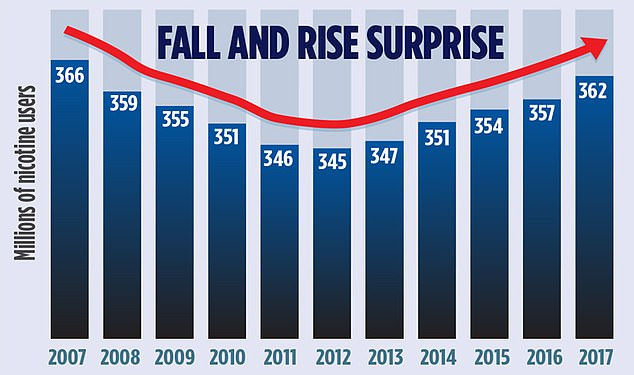Me encanta la repuesta Vash, ya que me permite llamar la atención sobre algunos puntos en mi “ramalazo” formativo.
1.- Para mi (se nota que no soy fumador) “vapeo” era todo lo que no suponía llevarte un cigarrillo a la boca y encenderlo con un mechero. Cuando tú hablas de Heat-Not-Burn, de Glo, de iQos, de Pulze, etc… demuestras que te has mirado el sector bastante a fondo y que yo estoy rascando en la superficie. Esa es la diferencia entre conocer una empresa o un sector o simplemente saber que vende cigarrillos.
2.- Si sólo rascas en la superficie sabrás si la empresa que miras está barata o no con los ratios actuales (mirando por el retrovisor) y por tanto estarás condenado a hacer un análisis básico de lo que hoy se puede ver. Pero no podrás hacer una hipótesis razonable sobre qué va a pasar en el futuro (mirar hacia adelante conduciendo).
3.- Creo que he hecho las preguntas correctas a alguien que se conoce el sector. Toco el tema de fondo que puede cambiar el sector (aunque usando un término erróneo al decir “vapeo”) con las nuevas formas de fumar… toco el tema de si esa vía tiene un tope o no (deberíamos añadir la velocidad de cambio)… toco el tema de si el nuevo reparto de cuotas cambiará drásticamente… luego creo que si te has dejado las pestañas (y el dinero) haciéndote ese tipo de preguntas, adquieres una experiencia que luego te permite hacer preguntas correctas.
4.- Las trampas de valor se producen cuando algo que hoy tiene un ratio bajo, mañana lo tiene caro… no porque haya mejorado la valoración, sino porque han caído los resultados. Es algo en lo que hay que pensar mucho cuando ves un ratio bajo. ¿Tiene sentido que el ratio esté bajo?.. porque a menudo la respuesta es que sí tiene sentido.
Dejando lo didáctico y yéndome al sector concreto… creo que es bastante razonable pensar que la transición vaya a ser lenta. Eso de sacar el mechero y quemar sigue siendo atractivo a ojos de mucho… y cuando veo publicidad de “I lika the way you Blue” me parece un tanto ridícula en comparación con las de antes del hombre de Malboro. También creo que en el nuevo segmento las cuotas NO van a ser las actuales y que la guerra que se está librando establecerá un nuevo paradigma en cuotas.
Lo del Brexit, Woodford y el efecto de los indexados lo consideraría más secundario.
Lo de los mentolados lo desconozco, pero me suena que hace 10 años ya lo comentabas. Es cómo la eterna canción en los USA, ¿no?
